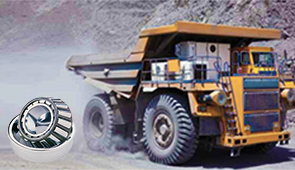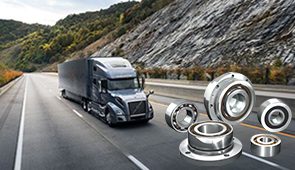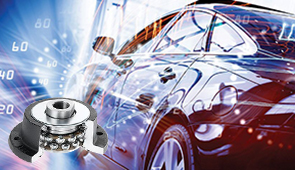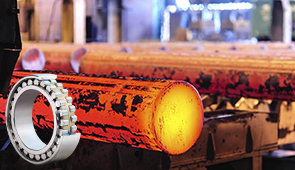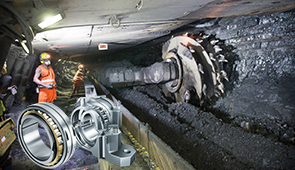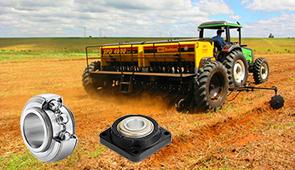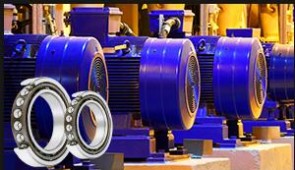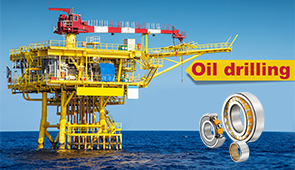Understanding Rod End Bearings: The Essential Guide to Spherical Joints
Rod end bearings, often referred to as spherical joints, are fundamental components in mechanical systems that require precise motion and load transfer. Engineered for versatility and durability, these bearings play a critical role in applications ranging from industrial machinery to aerospace systems. But what exactly makes them indispensable, and how do they function within complex assemblies? This guide aims to demystify the concept of rod end bearings, offering a comprehensive overview of their design, functionality, and practical uses. Whether you’re an engineer, technician, or simply curious about mechanical components, this article will equip you with the knowledge to understand and leverage rod end bearings effectively.
What are the Different Rod End Types?
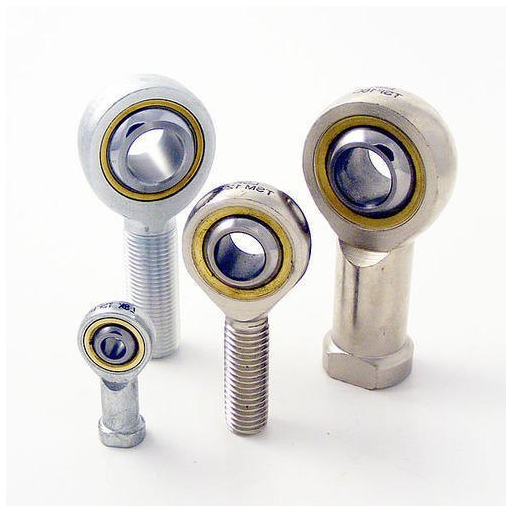
Exploring Male and Female Thread Options
Rod end bearings come in two main thread types, male and female. This distinction is based on the bearing shaft end and how the threads are done. Rod end bearings with a male configuration have an externally threaded shaft which is meant to screw into an internally-threaded part. On the other hand, rod end bearings with a female configuration have an internally threaded cavity which means they can screw onto a shaft with external threads. Both of these options give flexibility for use in various mechanical systems and setups.
Which type of thread to use, male or female, is dictated by the design needs of the assembly. Applications utilizing male rod end bearings tend to have space limitations that require the connection to have outward extension for easier access. Conversely, female rod end bearings are used when the design has tighter spaces for recessed mounting points. The selection of the thread type is crucial in ensuring the parts will fit together and will appl toy optimize the force within the system.
Equally, both male and female rod ends can be provided in different materials, coatings, and load ratings to suit particular operational conditions. As with any engineering design, the type selection must be made considering the direction and magnitude of loads, environmental factors, and motion requirements. This selection enhances mechanical system life, maintenance needs, and operational accuracy.
The Role of Spherical Bearings in Rod End Design
Spherical bearings enable smooth rotational and angular motion of rod ends while maintaining misalignment concerning various load scenarios, which is critical in the operations and design of rod ends. These bearings assist in achieving rotational and pivoting movements among different parts for efficient mechanical operations. They are optimally designed to sustain radial, axial, and mixed loads, which renders them useful to highly dynamic high-stress environments.
Spherical Bearings’ main advantage may be their self-aligning property. This property is helpful since it allows the rod end to accommodate for misalignment or angular misalignment due to assembly tolerances, thermal expansion of different components, or operational strain on the system. Reducing misalignment enhances contact wear on the rotating assembly which increases reliability and servicability of the overall system.
Moreover, spherical bearings at the ends of rods are usually designed to endure severe operating conditions. Depending on the design needs, these bearings can be made of hardened steel, stainless steel, or corrosion-resistant alloys. Advanced coatings or lubrication systems are usually integrated into the bearings, as these mechanisms help reduce friction and protect against moisture, debris, and extreme temperatures. Such adaptability guarantees that rod end assemblies with spherical bearings will perform optimally in sectors that include aerospace and heavy industry.
How to Choose the Right Series for Your Application?
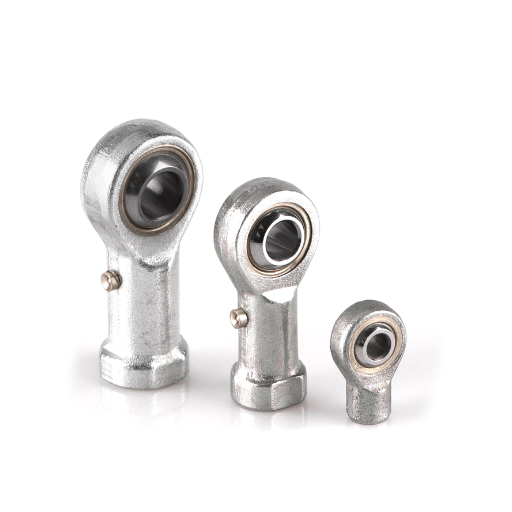
Understanding Performance and High Strength Requirements
Choosing the correct rod end assembly begins with understanding the application’s performance requirements and strength peculiarities. The critical factors include the scale of load, direction of load, be it static, dynamic or oscillatory, and the operational environment. Applications involving dynamic or oscillatory loads often require spherical bearings capable of misalignment to reduce stress concentrations.
Chrome-molybdenum steel and stainless steel are sometimes preferentially selected for their elevated tensile strength and high fatigue resistance. Stress distribution and deformation under certain loads can be analyzed with Finite Element Analysis (FEA), ensuring the rod end assembly is within safety margins.
Other factors, such as precision components, resistance to wear, and the component’s heat treatment, also contribute significantly to enhancements in overall performance. Advanced coatings such as polytetrafluoroethylene (PTFE) liners significantly reduce wear and friction over a long period, increasing longevity.
Considerations for Industrial vs. Agricultural Use
The operating environment is critical when assessing components for industry and agriculture. In the agricultural sector, machines must be able to endure unpredictable exposure to contaminants such as dirt, moisture, UV radiation, and chemical agents, including fertilizers and pesticides. In comparison, industrial settings are often more regulated, featuring controlled temperature environments and consistent mechanical loads, limiting occupations with temperature and mechanical load contamination.
The two sectors also diverge on some key performance metrics. Industrial environments emphasize precision, repeatability, and fatigue resistance, while agricultural applications focus on structural integrity and unwavering corrosion resistance coupled with low maintenance needs. Industrial-grade static carbon steel, for example, features intricate rigidity and exceptional precision machining capabilities; however, in agricultural settings, the need for enduring corrosion resistance causes polymer composites and stainless steel to take precedence.
Moreover, the cost-benefit analysis varies with the scenario of the use case. Some industrial operations might tolerate higher upfront costs for parts due to precision and longer life under controlled load conditions. In contrast, much of agricultural machinery needs economical components that are easy to service or replace due to field exposure and wear. Therefore, knowing these differing requirements is important to optimize performance and operational efficiency in their areas of application.
Selecting Based on Misalignment and Motion Needs
In analyzing subsystems that incorporate alignments or movements, great attention must be paid to the angular flexibility and type of motion involved. The selection of a component shifts depending on factors like angular misalignment tolerance, load-bearing efficiency through the joint, and repeatable performance under dynamic conditions. For example, universal joints are used in interfaces where rotational motion along the axis is required, coupled with high degrees of angular misalignment angulated misalignment because their cross-bearing mechanism compensates for deviations and continues to transmit torque.
Moreover, the increasing sophistication of materials and optimisations in design has also made it possible for components like elastomeric couplings and ball joints to accommodate even more complex scenarios of misalignment. In particular, elastomeric couplings are useful in cases where there is a need for vibration isolators and where there are other axial-level misalignments because of their damping and elastic properties. Other factors like wear, together with lubrication, affect maintenance intervals and operating life, and are also of paramount importance. Modern simulation methodologies enable designers to predict motion paths and assess misalignment-induced stresses on the component, allowing them to forecast system performance with greater realism.
For accurate motion control, fore parts can integrate feedback controls like encoders or positional accuracy sensors. This is critical in robotics and automation because even the slightest misalignment could lead to errors in operational sequencing. Modern engineering takes on even the most strenuously demanding expectations for alleviation of misalignment and motion control by integrating data algorithms with materials, design, and other engineering factors, which helps resolve issues on sophisticated requirements through modern engineering.
What Material Options are Available for Rod End Bearings?
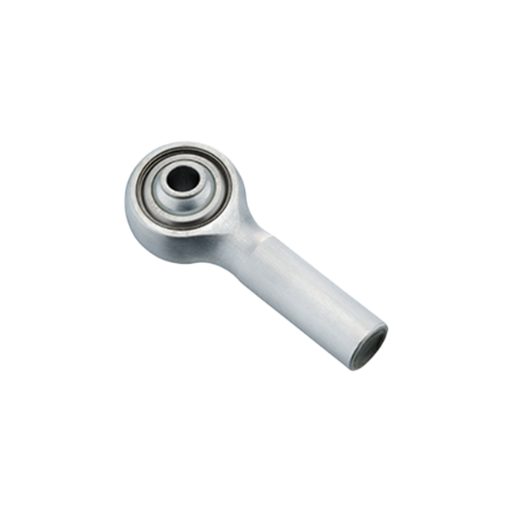
The Benefits of Steel and Alloy Construction
Exceptional strength, durability, and high-load adaptability make steel and alloy materials the most common components for rod end bearings. Steel and other alloys like carbon and stainless steel bear heavy loads for applications of tensile and compressive strength. Steel alloys also have superior fatigue resistance, essential for components in repetitive motion or variable force applications over long durations.
Steel and alloy construction has unrivaled performance in extreme temperature and corrosive region resistance. They are also very effective in corrosion and rust protection regions. Stainless steel contains chromium which prevents rust and corrosion. This makes it effective for use in the marine, industrial, or outdoor setting where moisture and corrosive chemicals are prevalent.
Stainless steel is further enhanced by modern alloy formulations that add components such as molybdenum, nickel, or vanadium, making the bearing more durable and wear-resistant. These materials retain precision during shifts and high-stress environments, which guarantees alignment and minimal deformation.
Manufacturing steel and alloy components is advantageous because they can be machined to the exact rotational tolerances, as well as undergo surface treatments such as plating or coating. These treatments increase the resistance to wear and lubricity, which increases the longevity and functionality of the rod end bearings. Due to their combination of physical strength, environmental resistance, and sophisticated factors from modern engineering, steel and alloy materials continue to be the preferred choice for challenging and sophisticated engineering applications.
Exploring Self-Lubricating and Maintenance-Free Options
The self-lubricating and maintenance-free rod end bearings are a notable engineering achievement for designs that require reliability under difficult conditions. The bearings usually contain PTFE (polytetrafluoroethylene) composites where a lubricant is incorporated, or polymer liners which itself has lubricating capabilities. These engineered solutions help remove external lubrication and therefore lower maintenance requirements, downtimes, and chances of contamination in sensitive environments.
One of the most notable benefits of self-lubricating bearings is the static and dynamic operating conditions that can be achieved with self-lubricating bearings as compared to manually lubricated bearings. Other examples include: chemical processing and marine applications, where the temperatures and exposure to corrosive agents are extreme. In addition to lowered lubrication, the components ease cleanroom operations, especially those in the medical or semiconductor fields, making it ideally suited for non-traditional environments.
Composite liner materials possess improved wear resistance and may increase the service life of self-lubricating bearings by 20% relative to traditional lubricated bearings, depending on the load and speed conditions. These lagging self-lubricating bearing materials maximize friction ratio while retaining cross-sectional strength and performance for long periods. In conjunction with finite element analysis (FEA) and practical evaluation, manufacturers can now construct self-lubricating bearings that are designed more accurately for particular loading conditions and other bespoke parameters.
As these new technologies are adopted, self-lubricating and maintenance-free rod end bearings will progressively set new boundaries for engineering trustworthiness and precision accuracy as they become integrated across disciplines. These innovations will enable global industries to operate more efficiently and at a lower cost while enhancing sustainability.
Impact of PTFE Liners on Performance and Wear
Wear resistance and operational efficiency have dramatically improved with the development of rod end bearings due to the Polytetrafluoroethylene (PTFE) liner’s wear characteristics. Its mechanical properties, particularly the low friction coefficient, enable smoother motion under variable loads. PTFE liners also greatly reduce metal-to-metal contact, which is responsible for wear in conventional bearing systems.
PTFE’s inclusion enhances bearing longevity, even in high-stress, low-lubrication conditions, reducing maintenance demands. Time and time again, the results from testing have shown that bearings with PTFE liners outperform others bearing extreme temperature oscillations, high-frequency oscillations, and corrosive environments. Precision reliability in aerospace, automotive and heavy machinery industries is crucial as they directly affect operational costs and safety margins, making this grade of durability critical to them.
PTFE’s chemically inert nature increases resistance to oxidation and contamination, providing added protection and ensuring longitudinal integrity across a wide range of applications. PTFE liners enable engineers to meet or exceed performance standards while improving sustainability metrics by reducing total lubricant dependence and extending equipment life cycle. Material science innovations like this are a testament to the increasing focus on enhancing modern engineering solutions.
How Does the Design and Feature Affect Performance?
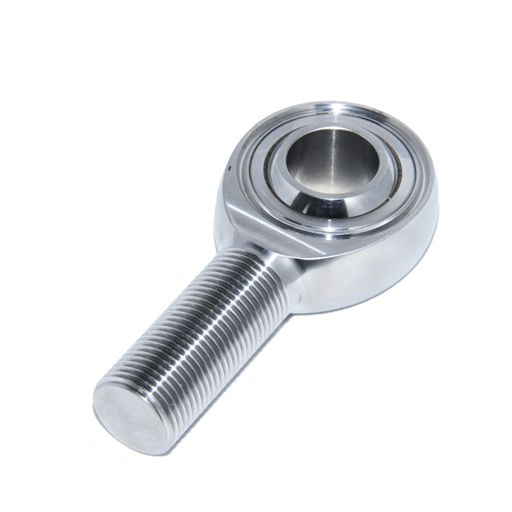
The Importance of the Spherical Inner Ring in Articulated Motion
The spherical inner ring serves a very important purpose in enabling articulate motion within mechanical systems, especially where misalignment or angular motion occurs. This part permits effortless rotational and oscillatory movements in which uniform stress is distributed to bearing surfaces to reduce locational wear and increase the life of the assembly.
Due to advanced material technologies and precision engineering, spherical inner rings are manufactured almost error-free. High-grade alloys and advanced coatings are now employed for improved durability and friction reduction in extreme operating conditions, cutting maintenance for the spheres. Self-lubricating coatings incorporated within the ring augment mechanical performance when the spheres are under high-load or high-speed rotations, ensuring the rings endure corrosion and fatigue in corrosive surroundings with dynamic loads.
Few components are used in aerospace, automotive, and heavy machinery as the integration of spherical inner rings. Studies show that these components can directly improve the efficiency and reliability of a system by reducing operational vibration by as much as 20%. Their ability to tolerate several degrees of misalignment ensures uninterrupted functionality—even for demanding applications subject to dynamic shifts or unpredictable forces. This helps to maintain the tremendous precision, stability, and durability needed for articulated motion systems, as well as impending motion systems.
Evaluating Housing and Surface Contact for Precision
The design of the housing, including surface contact points, influences the precision of every mechanical assembly. A good housing design optimally aids in load distribution, reducing stress concentrations that could result in negative deformations or wear over time. Achieved precision is directly proportional to the uniformity of surface finishes and the degree of machining tolerances, often in microns, provided, and alignment during operation.
Key factors for housing design encompass the choice of material for thermal expansion control, corrosion resistance, and structural rigidity. For high-performance applications, interface hardened steel or advanced composites that are high strength-to-weight ratio are utilized because of superior durability. Also, surface contact must be checked for uniformity under both static and dynamic conditions, as any lack of uniformity can lead to magnified errors for movements, both rotational and linear.
Modern predictive analytics, especially finite element analysis (FEA), enable engineers to assess strain foil gauges around housings and contact interfaces and assess for potential fatigue and wear failure. Enhancing accuracy for operational precision, system reliability, and longevity when heavily relied upon is achieved by combining manufacturing techniques with predictive analyses.
Role of Precision Rod Ends in High-Performance Applications
Precision rod ends are vital in high-performance applications, particularly where accuracy in motion, load bearing, and reliability are paramount. Rolled bearings of this type allow adaptation of position to both static and dynamic loads and permit static and dynamic positional tolerances in harsh environments. These components are crucial in aerospace, motorsports, and industrial automation as they decrease friction and withstand rotation without failure.
Today, such precision rod ends are produced from modern materials like heat-treated alloy steels, stainless steels, or titanium used in aerospace components. These materials improve strength-to-weight ratio while increasing resistance to corrosion, fatigue, and several other critical life-limiting factors due to extreme stresses and environmental conditions. Also, these rod ends are supported by low-friction PTFE and other engineering polymers, which reduce maintenance and service intervals.
More improvements in design, including self-lubricating surfaces and better joint sealing, have increased performance during high vibration and high load operation. Coupled with data-driven predictive design tools, precision rod ends are optimized for increased operational life, allowing engineers to simulate load and stress cycles for different operational conditions. The addition of these advanced components provides unparalleled reliability, which is why precision rod ends are considered the backbone of leverage technologies for modern precision engineering systems.
What are the Common Applications for Rod End Bearings?
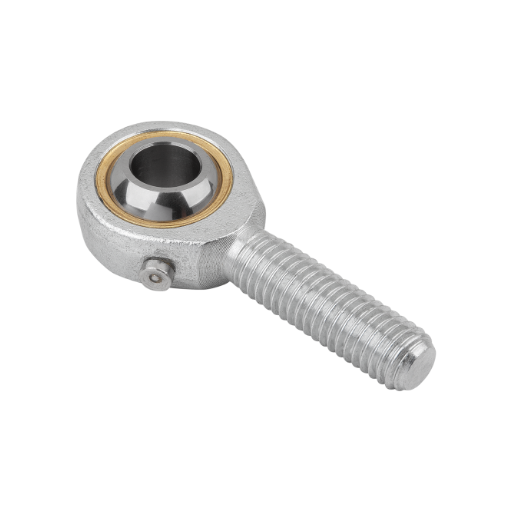
Use in Machine and Industrial Settings
Rod end bearings, also known as heim joints or rose joints, are crucial in machines and industries because they can adapt to oscillation, misalignment, and movement while under dynamic loads. Their inner ring is spherical, allowing for smooth force transmission. Smooth force transmission is essential in difficult operational settings. Manufacturers use best practices, chrome-plated carbon steel, or stainless steel, along with high-grade lubrication systems to maximize the operational effectiveness and durability of the components. This becomes critical in industrial settings dealing with precision and reliability issues.
Vibration damping and wear reduction allow for effortless mechanistic part positioning, driven by automation lines powered by rod ends. Illustrating these in real life shows them playing a primary role in linear motion control systems as linkage connectors joining the moving parts to actuating devices. Other heavy machines, particularly excavators and cranes, use the rod ends too, absorbing massive radially and axially directed loads while enabling highly articulated moves with the extended life of the machine. Harsh operating environments found easily around industrial equipment highlight the importance of these components when in critical, exposed environments against demanding load capabilities.
Furthermore, rod end bearings find significant application in conveyor systems where they connect devices in systems that work in a cycle and maintain seamless operation regardless of the loads and temperatures experienced. Incorporation of self-lubricating rod ends or Teflon-coated liners enhances system productivity while increasing maintenance intervals. Integrating Teflon-paired self-lubricating systems with bearing materials reduces rest intervals and improves system productivity. Coupled with advanced analytics on materials, tolerances, failure rates, and data-enabled engineering insights, engineers can forecast component lifespan and fine-tune system efficiency. As a result, precision rod end bearings are an enduring cornerstone in augmenting industrial processes, minimizing idle time, and operational waste efficiently.
Applications in Automotive and Aerospace Industries
Due to high-load capacity management, smooth mechanical movement, and extreme operating condition endurance, precision rod end bearings are crucial components for the automotive and aerospace sectors.
- Automotive Applications: Rod end bearings are widely applied in the automobile industry with uses in steering linkages, gears, and suspension systems. The dynamic loading capabilities of these components allow for proper control of force alignment and vehicle positional stability, achieving precision vehicle steering. Additionally, advancements in material science along with lubricating coating,s have minimized wear and fatigue of these components, improving the overall vehicle reliability. To demonstrate, low-friction modern composite bearings enable smoother mechanical operations and improved fuel economy.
- Aerospace Applications: The aerospace industry requires precision rod end bearings that are reliable under severe operating conditions while maintaining strict tolerances. These rod end bearings are integrated into the flight control system, landing gears, turbines, and hydraulic actuators. Aerospace rod end bearings are made from high-strength alloys or composite materials due to their intense exposure to vibration, temperature changes, and axial loads. Integrating these bearings into the system enables mission safety while extending maintenance intervals and operational lifespan.
Through innovation in material grades along with computational modeling, engineers are solving more advanced problems in automotive and aerospace industries by expanding the operational limits of rod end bearings.
Exploring Agricultural and Construction Uses
Precision and durability are critical in construction and agricultural machinery, and rod end bearings help achieve both. Commonly found in hydraulic cylinders, steering linkages, and heavy equipment pivoting joints, these bearings offer alignment, high load, and repetitive motion capabilities. Because harsh environments are difficult on mechanical systems, rod end bearings are essential for dependable efficiency.
Industry-focused innovations have boosted the self-lubricating material and corrosion-resistant coatings used in dirt, moisture, and chemical care bearing environments to help extend service life. Additionally, heavy-duty rod ends and reinforced housings with spherical element structures help support immense axial and radial loads produced by tractors, harvesters, excavators, and loaders.
The heightened implementation of automation in agriculture and construction machinery, thereby increasing the demand for rod end bearings that enable greater load bearing as well as controlled movement. Computer analysis has shown that performance efficiency could improve by as much as 20% with optimized designs. This means less downtime for operators and a lower total cost of ownership. The use of innovative materials alongside data-driven design illustrates the vital role of rod end bearings in modernizing these critical sectors.
Frequently Asked Questions (FAQ)
Q: What are rod end bearings, and how do they function?
A: Rod end bearings, also known as spherical joints, are mechanical articulating joints that allow for misalignment and rotational movement. They function by using a plain bearing or spherical sliding element to provide smooth motion between connecting parts.
Q: Are rod end bearings available in metric sizes?
A: Yes, rod end bearings are available in both inch and metric sizes, catering to different industry standards and application requirements.
Q: What is the difference between a left-hand and a right-hand rod end bearing?
A: The difference lies in the direction of the thread. Left hand rod end bearings have threads that screw counterclockwise, while right hand ones screw clockwise. This affects how they are installed and adjusted in mechanical systems.
Q: How important is lubrication for rod end bearings?
A: Lubrication is crucial for the performance and longevity of rod end bearings. It reduces friction and wear, helping to maintain smooth operation. Grease or oil is commonly used, and some rod ends come equipped with lubrication fittings for easy maintenance.
Q: What are some common applications for rod end bearings?
A: Rod end bearings are used in various applications such as automotive, aerospace, marine, and industrial machinery. They are ideal for connecting control rods and linkages where pivoting motion is required.
Q: How does dust and dirt affect rod end bearings?
A: Dust and dirt can cause increased wear and reduce the performance of rod end bearings. Proper sealing and regular maintenance help protect against contamination and extend the bearing’s life.
Q: What is the significance of race and clearance in rod end bearings?
A: The race is the surface within the bearing where the ball or spherical component slides, while clearance refers to the space between the bearing components. Proper race and clearance ensure smooth operation and prevent binding or excessive play.
Q: What should be considered during the installation of rod end bearings?
A: During installation, it’s important to align the bearings correctly, ensure proper lubrication, and avoid over-tightening to prevent stress on the joint. Attention should also be given to the orientation of left hand or right hand threads.
UCTH213-40J-300 with Setscrew(inch)
CNSORDERNO: Normal-duty(2)
TOGN: UCTH213-40J-300
SDI: B-R1/8
SD: 2 1/2
UCTH212-39J-300 with Setscrew(inch)
CNSORDERNO: Normal-duty(2)
TOGN: UCTH212-39J-300
SDI: B-R1/8
SD: 2 7/16
UCTH212-38J-300 with Setscrew(inch)
CNSORDERNO: Normal-duty(2)
TOGN: UCTH212-38J-300
SDI: B-R1/8
SD: 2 3/8
UCTH212-36J-300 with Setscrew(inch)
CNSORDERNO: Normal-duty(2)
TOGN: UCTH212-36J-300
SDI: B-R1/8
SD: 2 1/4
UCTH211-35J-300 with Setscrew(inch)
CNSORDERNO: Normal-duty(2)
TOGN: UCTH211-35J-300
SDI: B-R1/8
SD: 2 3/16
UCTH211-34J-300 with Setscrew(inch)
CNSORDERNO: Normal-duty(2)
TOGN: UCTH211-34J-300
SDI: B-R1/8
SD: 2 1/8









